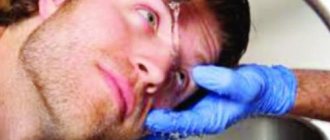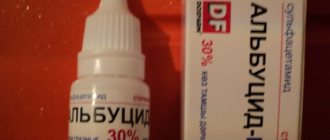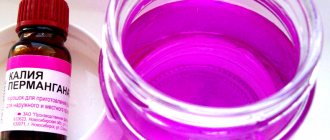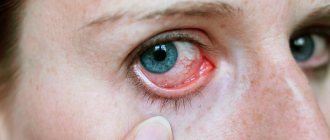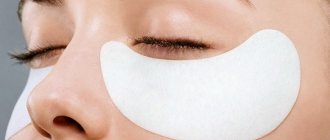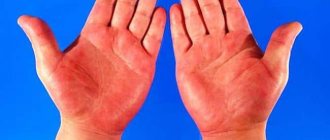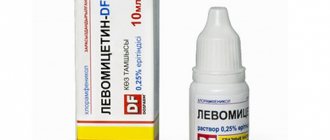What happens to the eyes during welding and what are the consequences?
Welding is not only the joining of metal parts; it is also used when working with other materials. Electric current is used as a source of formation of the welding arc. So what exactly causes harm?
When welding, rays of three spectra are released at once: infrared, ultraviolet and light. The intensity is too high for the human eye, it exceeds the permissible level.
There is a common expression among welders: “catching a bunny.” This means that the cornea of the eye has been burned. We do not perceive infrared and ultraviolet rays with our eyes, but they have a very intense effect on the eyes. Moreover, negatively. Damaging the mucous membrane, retina and lens of the eye, causing a burn.
The main eye disease that occurs under the influence of light radiation from welding is electroophthalmia.
What other causes of eye damage from welding are there?
- Negligent attitude towards work. Often welders do not use special safety glasses, which are required to be used for safety reasons. Or the use of low-quality glasses purchased in order to save money;
- Smoke effects on the mucous membranes of the eyes;
- Release of gases affecting the eyes;
- Foreign body getting into the eye. Most often, these are very small pieces of metal that stick into the cornea.
What is prohibited in case of a corneal burn?
Patients with electroophthalmia are contraindicated:
- Rub your eyes. When a burn occurs, itching and discomfort appear in the eyes. Sometimes blepharospasm appears. Reflexively, the patient tries to feel better and begins to rub his eyes. This leads to damage to the surface of the cornea, so the pain syndrome only intensifies. The severity of the inflammatory response also increases.
- Unauthorized use of eye drops is prohibited, because most of them contain preservatives. These substances slow down regeneration processes and support inflammatory phenomena.
- It is not advisable to rinse your eyes with ordinary tap water, since it contains active ions (magnesium, calcium, chlorine) that have an irritating effect on the mucous membrane of the eye.
What are the symptoms of eye damage from welding?
Symptoms of eye damage from welding are very similar to the symptoms of many ophthalmological and even allergic diseases. However, it is clear that such symptoms occur immediately after welding work, which means that the influence of the spectrum of the welding arc is to blame.
Main symptoms:
- Severe lacrimation;
- Redness and swelling of the eyelids and eyeball;
- Sharp cutting pain in the eye;
- Sensation as if sand had been poured into the eyes;
- Fear of light;
- Tight closure of the eyelids as a result of spasm.
All symptoms, especially pain, begin to intensify after a few hours. This means that the burn was still received. If the pain does not intensify and gradually vision and eye condition return to normal, after about 1-3 days there will be no burn.
What to do if some part of the eye is burned after welding, pain and discomfort intensify? The answer is clear – contact a specialist. The hospital will conduct an examination, determine the extent of the damage, and prescribe therapy.
However, the profession of a welder requires frequent business trips, trips out of town and other places where it is not always possible to receive qualified assistance at any time of the day. And ordinary people who accidentally receive such a specific eye burn do not always have such opportunities. What can be done, what preparations should I use, are there any universal drops after welding?
Main symptoms
A welding burn on the arm, leg, face, eyes and other parts of the body is always accompanied by unpleasant sensations, but often a person does not notice them at the initial stage. However, gradually the unpleasant symptoms increase, worsen and cause severe discomfort.
When a hand is burned by welding, as well as other parts of the body except the eyes, the following symptoms are observed:
- There is a clear change in skin color. The site of injury may turn red, yellow, and sometimes black;
- the appearance of blisters without pus;
- a person notes the appearance of pain, burning sensation, itching;
- the affected areas begin to peel off intensely;
- There is an increase in body temperature, it is accompanied by chills.
Note! If a burn occurs, a characteristic odor may emanate from the skin, it becomes red and hot to the touch, and it is better to refuse welding, otherwise even more harm can be caused during work.
With electroophthalmia (eye burn), the following unpleasant signs are observed:
- unpleasant painful sensations in the organs of vision, they spread inside the head, to the eyelids;
- there is a constant sensation of a foreign body in the eyes;
- increased secretion of tears. This is a protective reaction of the body;
- there is increased sensitivity to light, photophobia;
- decreased visual acuity.
Which drops after welding to choose
The choice of medicine is made based on the stage of the burn. Each stage has its own symptoms.
First stage
Characteristic symptoms:
- Very severe itching;
- Redness of the whites of the eye, which can be regarded as minor. Characterized by a faint pink color;
- Burning;
- Cloudy iris.
During this period, the use of drops after welding is the most effective means for therapy and prevention of the development of the disease.
What medications will be needed:
- Anesthetic drops after welding. They will help relieve all unpleasant symptoms: pain, itching, feeling of sand in the eyes and others;
- Vasoconstrictor drops. They will relieve swelling and inflammation;
- Antibacterial drops. They will prevent infection from developing and accelerate tissue regeneration.
Therapy is carried out for 2-3 days; if symptoms do not go away or worsen, you should urgently consult a doctor.
Second stage
Characteristic symptoms:
- Erosion of the cornea of the eye;
- The conjunctiva is covered with a film;
- Severe photophobia, resulting in spasms;
- Very strong sharp pain when moving the eyeballs.
At this stage, to treat an eye burn, it is possible to use the above types of drops.
There are also third and fourth stages. Self-treatment is not recommended. These are very difficult stages, at the fourth stage tissue necrosis is already possible and only surgical intervention will help here. At these stages, the use of any medications in the form of drops is practically useless.
Important: do not delay your visit to the doctor! Be sure to tell us exactly which drops after welding were used for treatment.
Treatment
It is very important not to use any folk remedies at least in the first few days after a burn and to be treated only with medications.
There have been no studies on the effects of "grandmother's" recipes on damaged eyes, so postpone experimenting with them until the damaged organ has relatively recovered.
There are three types of drops that can help against the disease: painkillers (Tetracaine, Lidocaine), anti-inflammatory and vasoconstrictors (Vizin, Vizaptin, Proculin).
The first category should be treated with caution - painkiller drops can negatively affect vision, so if you need to reduce pain, it is better to use tablet painkillers.
But applying antiseptic and antihistamine ointments will never be superfluous. Gently apply it to your eyes at least once a day.
Your doctor may prescribe antibacterial drops such as Tobradex and Tobrex.
Remember: no matter how severe the itching, it is strictly forbidden to rub your eyes, even with clean hands. Anti-allergy drops and tablets should be used against itching.
This table clearly shows medications that can be used for eye burns:
Welding can be very detrimental to your vision. Constant work at the computer also threatens visual impairment. These articles will help you avoid such consequences:
- Tibetan gymnastics for the eyes
- Eye exercises when working at a computer
- Drops for tired eyes
Folk remedies
When the acute stage of electroophthalmia has already passed, you can experiment with folk remedies. This, first of all, includes antiseptics such as aloe juice and oak bark tincture.
Also good are moisturizing infusions that will relieve itching, reduce pain and relax the eyes: chamomile infusion, cabbage infusion, honey tincture.
There is also such an option as a potato mask. To prepare it, finely grate a couple of potatoes, apply the resulting mass evenly on gauze and apply it to your eyes for half an hour.
This mask will combine anti-inflammatory and analgesic functions.
Anesthetic drops for gas after welding
First of all, after eye damage as a result of exposure to welding, it is necessary to relieve the pain of the victim. This is also necessary in order to more accurately assess the condition of the affected eye.
The pain can be so severe that the victim cannot even open his eyes.
For this purpose use:
- Lidocaine;
- Tetracaine;
- Alcaine.
These are the most famous types of welding eye drops, recommended as a local anesthetic for pain relief.
Their action is based on the blockade of voltage-dependent Na channels, which prevents the formation of impulses in nerve endings and the conduction of impulses along nerve fibers.
They are used by instilling 1-2 drops into the conjunctival sac. Restrictions on use are described in the instructions for use of drops after welding.
They have a fairly short-term effect. Side effects include local allergic irritation.
Contraindication is the period of waiting for a child and lactation, childhood.
Important: you can use anesthetic eye drops after welding twice a day, not more often.
Degrees of burns
Welding burns to the legs, arms, eyes and other parts of the body can have varying degrees. They all differ in complexity and the nature of the flow. If in mild cases the injury heals quickly and is not accompanied by complications, then in severe cases the recovery process is delayed for a long time and often occurs with complications.
Doctors distinguish the following degrees of welding burns:
- first (easy). A welding light burn is accompanied by slight redness of the epidermis. When the eyes are exposed to strong light, the cornea becomes slightly cloudy;
- second (middle). During an injury, small bubbles with clear interstitial fluid form on the surface of the skin. Spots with a whitish tint appear on the sclera of the eyes; they can be removed using ophthalmic instruments;
- third (heavy). Necrosis of areas of the skin and charring are observed. Damage to the muscle layer is also noted. The surface of the eyes is completely covered with a white film that cannot be removed;
- fourth (super heavy). This degree is accompanied by necrosis of the skin, subcutaneous tissue, muscle tissue, and membranes of the organs of vision.
Important! For mild to moderate burns, recovery is rapid; first aid is often sufficient. But in severe cases, it is necessary to take the victim to a doctor as soon as possible.
Vasoconstrictor drops
After pain relief, a drug is used that will effectively treat pathological symptoms: relieve swelling, remove redness and inflammation, relieve itching.
These drugs are based on adrenergic agonists that act on the receptors of the vascular walls. They cause the blood vessels to constrict, resulting in relief of the symptoms of the disease.
Vasoconstrictor eye drops are very effective, but they cannot be used for a long time. Otherwise, they will cause the opposite effect.
Eye drops after welding with a vasoconstrictor effect are used for no longer than 5 days. Otherwise, addiction to the drug develops and then the symptoms that needed to be eliminated intensify.
And, of course, local exposure to drops only relieves symptoms that cause discomfort, but does not cure the disease itself.
Contraindications:
- Pregnancy and lactation;
- Childhood;
- Glaucoma;
- Cardiovascular diseases;
- Dry eye syndrome;
- Intolerance to naphazoline and tetrizoline.
The most effective means:
- Visine;
- Okumetil;
- Polynadim;
- Octilia;
- Naphthyzin;
- Alomide.
Vasoconstrictor eye drops are used after welding by instillation onto the conjunctiva. Dosage: 1-2 drops, 2 to 4 times a day.
Before using the drug, you need to remove contact lenses and reinsert them only after 30 minutes.
Important: the maximum period of use of such drops is 4 days. If after 2 days there is no improvement, then it is better to discontinue use.
Side effects:
- Arrhythmia;
- Increase or decrease in blood pressure;
- Decrease in temperature;
- Cold sweat;
- Pulmonary edema;
- With prolonged use, the symptoms of the disease intensify.
With the correct dosage and use of eye drops after welding, side effects are unlikely.
Antibacterial drops
If you receive a burn as a result of exposure to welding, then most likely inflammation has begun. This means the use of antibiotics will be required. But they must be in shape. Which will allow you to apply them topically, directly to the affected area.
The most famous drops with an antibacterial effect:
- Tobrex;
- Oftaquix;
- Gentamicin;
- Dexamethasone;
- Taufon or Taurine.
The mechanism of action of antibacterial drugs is to block the formation of bacterial proteins by binding to bacterial ribosomes.
Method of application: by introducing drops onto the conjunctival sac. The dose of use always depends on the severity of the condition, but the usual dosage is:
- For infections with moderate symptoms, antibacterial eye drops after welding are used in the amount of 1-2 drops with an interval of 4 days;
- For infections with symptoms of high severity, it is recommended to reduce the interval of drug administration - 1-2 drops every hour;
- Antibacterial drops can be used for a course of no more than 2 weeks.
Contraindications for use:
- Intolerance to components;
- Infancy (less than 1 year);
- Severe kidney pathologies;
- Pregnancy and breastfeeding;
- Myasthenia;
- Acoustic neuritis.
Important: long-term use of antibacterial eye medications beyond 2 weeks can lead to fungal or secondary bacterial infection.
Side effects:
- Reaction to light in the form of a spasm;
- lacrimation;
- Burning and itching;
- Development of bleeding of mucous membranes;
- Hallucinations.
Important: before using eye drops after welding, contact lenses must be removed.
Eye drops after welding for quick regeneration
If the above complex treatment relieves the symptoms of an eye burn after welding, you need to use drugs that ensure the regeneration of injured tissue.
You can use various products in small courses so that they are not addictive and help restore your eyes faster.
According to ophthalmologists, the use of the following medications is recommended:
- Emoxipin. The main direction of action is to help in the resorption of hemorrhages, tissue regeneration, strengthening of blood vessels;
- Derinat. These eye drops after welding help solve the main problem of the burn - restore the gas mucosa and prevent the formation of scars;
- Vitasik. General action drops have an effect on the mucous membrane and restore nerve endings.
During use, it is important to adhere to the recommendations and dosages that are contained in the instructions for using eye drops after welding.
What not to do if you have an eye injury after welding.
- No need to scratch your eyes. Or trying to get sand that you feel in your eye. It is not there, it is a symptom of inflammation and mechanical impact will increase the pain;
- Do not wash the injured eye with water. The weld burn does not require cooling. There are erosions on the mucous membrane and trace elements contained in water will only increase inflammation;
- In the acute stage of a burn, you cannot use well-known folk remedies: tea leaves, honey, aloe and others. They will only bring additional inflammation, allergic reactions and other undesirable consequences. It is generally better not to use such methods. There are a huge number of specialized eye medications on the pharmacy market;
- You cannot independently prescribe treatment and dosage of eye drops after welding. The best treatment will be prescribed by your doctor. Drops can be used urgently.
When to call a doctor
It was already written above that a burn from welding can be of varying degrees and, depending on this, therapy is prescribed. Only a doctor can determine the degree of injury using special equipment. If the eye burn from welding is mild, then the ophthalmologist will write out recommendations and send you home. But when an eye injury due to welding is diagnosed as severe, hospitalization is necessary.
What to do if you have an eye burn - we've covered it. Now we need to answer the question of how long the disease lasts. With a mild injury and proper treatment, symptoms disappear after a few days. At the same time, every day the condition is getting better and better. If no remedy for electroophthalmia gives the desired result, do not hesitate, you must seek help again.
In a critical situation, if welding results in not only a burn to the eye, but also a burn to the face or body, you must immediately call an ambulance. Doctors will immediately provide emergency first aid and, if necessary, take you to a medical facility for detailed diagnosis and qualified treatment.

